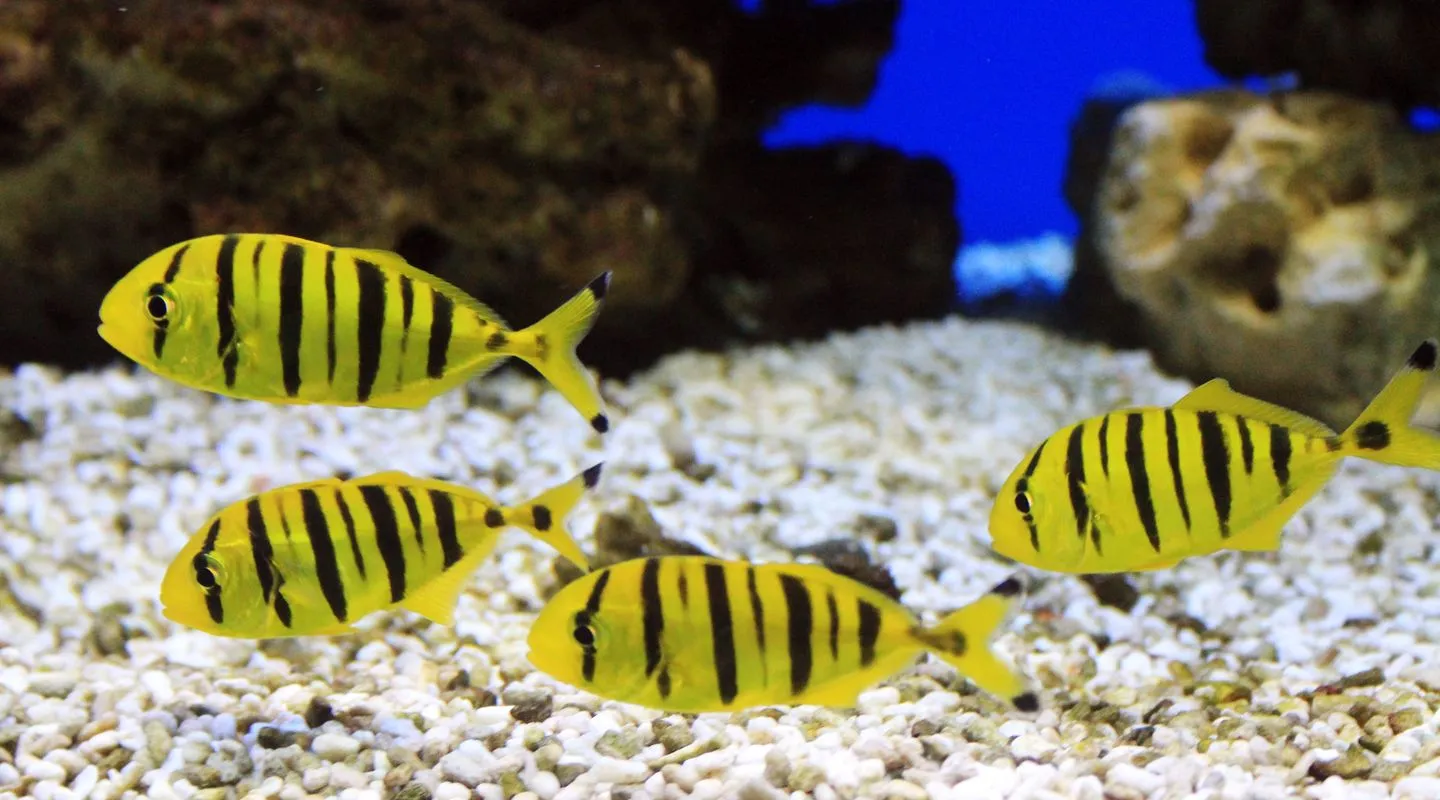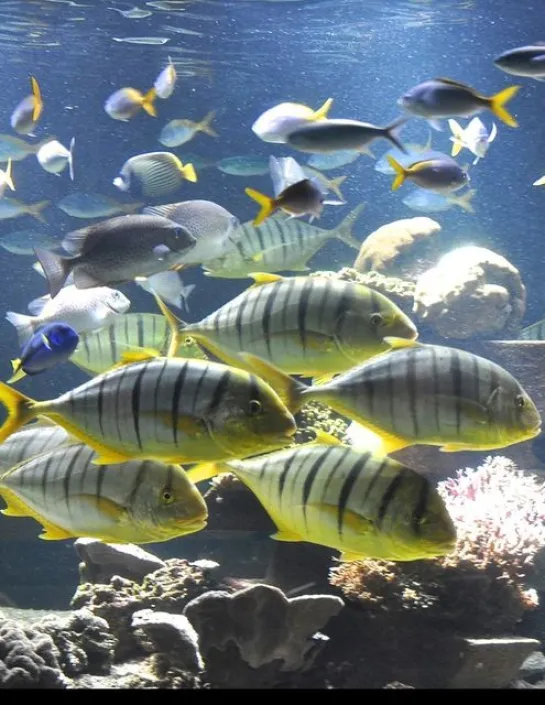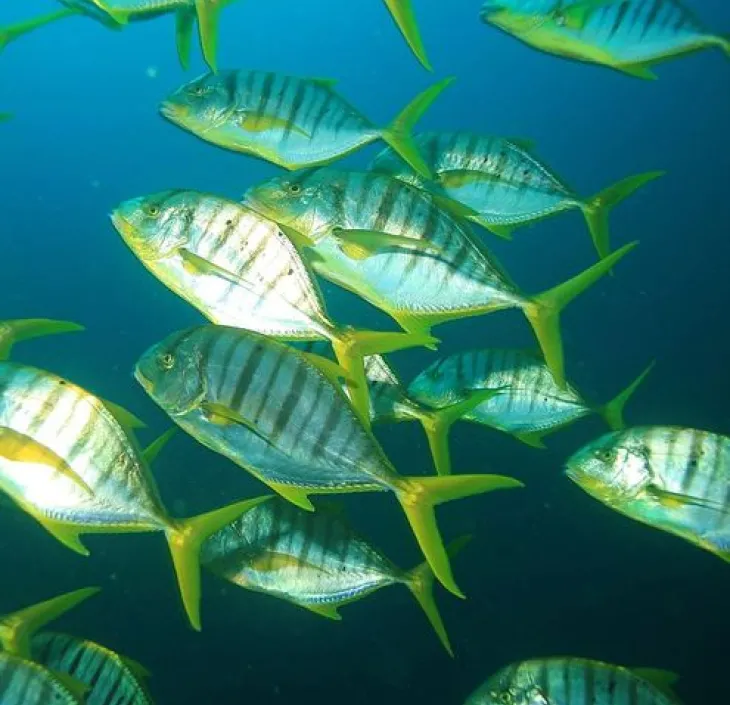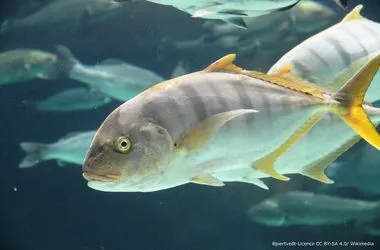And it provides an opportunity to recover food scraps.

Pelagic fish

Identity card
Not Evaluated
Indo-Pacific region
Coral reefs down to a depth of 80 metres
120 cm maximum, average size: 75 cm
Feeds on shellfish, small invertebrates buried in the sand, as well as small fish.

In Nausicaá, trevallies swim in the wake of rays. This saves energy.
And it provides an opportunity to recover food scraps.
Golden trevallies are among the most popular fish for divers who are lucky enough to be able to explore the tropical deep-sea islands.
The spawning period is in late spring. Sexual maturity in females is estimated at 32.5 cm. Juveniles may move among the filaments of jellyfish or travel with larger animals, thus benefiting from protection.
Larger specimens may be found with groupers and sharks. At sea, these trevallies also follow divers.
Prized for its meat, it is now a species raised in aquaculture.
Trevallies feed on shellfish, small invertebrates buried in the sand, as well as small fish. By rummaging through the sand in search of food in the large open sea tank at Nausicaa, golden trevallies clean the aquarium and contribute to the healthy balance of the ecosystem.
They can be found in coral reefs in the Indo-Pacific region down to a depth of 80 metres.
They live in coral reefs down to a depth of 80 metres. They can be found in the Indo-Pacific region, from the east coast of Africa to Japan and the southwest coast of Baja California Sur, Mexico and the Gulf of California to Ecuador.
Trevallies are notably found with the dreaded Pelamis platurus, a venomous sea snake Their livery is reminiscent of that of their protector.
The golden trevally is a ubiquitous species, i.e. it is found in vast and diverse areas (as opposed to endemic species that are limited to one territory).
journey on the high seas

The Ocean Mag
In the spotlight
Poissons, crevettes, requins, les animaux qui se reproduisent ou sont élevés à Nausicaá rejoignent les espaces d'exposition.

Article
Savez-vous combien d’espèces de requins sont à découvrir à Nausicaá ? Apprenons-en plus sur ces animaux fascinants !
Article
Which came first, the egg or the fish? A brief overview of eggs and reproductive strategies in marine animals.